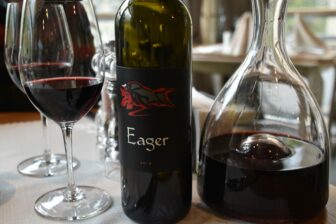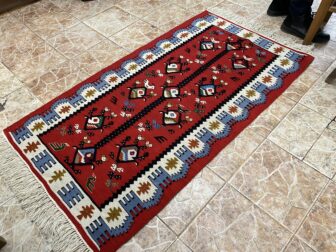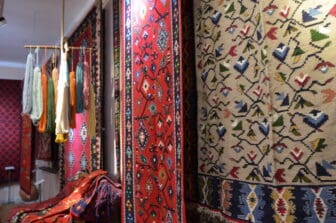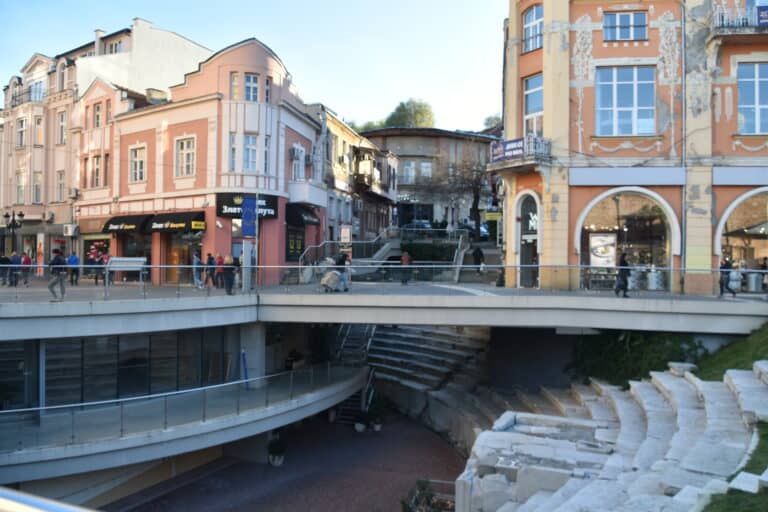
[Apr. 2022] It may not be well known, but it seems that Plovdiv, the second largest city in Bulgaria, was one of the historically important cities in Europe.
The town was conquered and developed by the famous Alexander the Great’s father, Philip II, so it is also known as Philippopolis.
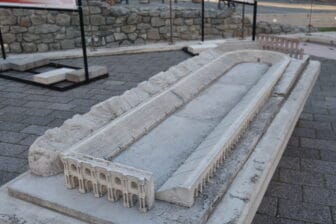
After having a satisfying meal at the “Philippopolis” restaurant, we first went to see the Roman Stadium, not far from the restaurant.
When we went there, we found out that the ruins are hidden under the pedestrian road, Knyaz Aleksandar I Street.
In other words, the road and buildings cover the ruins.
It seems that it was a huge stadium, and even after walking down the street, some part of the ruins appeared.
It was created during the time of Emperor Hadrian in the 2nd century AD, and is said to have been able to accommodate 30,000 spectators.
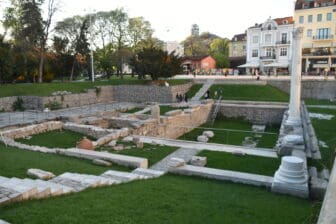
It was easy to get down to the ruins and it was a playground for children.
The children here grow up accustomed to the ruins of the Roman era from an early age.
At the end of Knyaz Aleksandar I Street is the Central Square, in one corner of which is another Roman ruins, Odeon.
This is also an archaeological site that seems to have been left unattended, but it is said to be from the 2nd century AD.
We walked to the central square and turned back.
This Knyaz Aleksandar I street is a bright pedestrian paradise.

It was a weekday afternoon under a cloudless sunny day, and many people were coming and going.
Its peaceful appearance resembled the main street of Novi Sad in Serbia we visited a few years ago.
The Dzhumaya Mosque is located at the point where this street meets the slope that goes up to the old town.
When I saw this scene with a mosque, I remembered, “I bought a necklace from a seller here a long time ago.”
In fact, this was the second time I came to Plovdiv.
The first time was in 2008 when I participated in the tour.

It was a strange tour aimed at visiting the Thracian ruins, and we had only a little free time in such an important city, Plovdiv.
According to the guidebook, this Dzhumaya mosque has a history dating from the 15th century and is one of the oldest in the Balkan Peninsula.
It’s still in use, and when we passed by, we heard a prayer from inside.
When we went up the slope of the old town and came back to the restaurant “Philippopolis”, the sunset was in full swing.
I was fascinated by the beautiful sight.
The story goes back and forth, but the upper floor of “Philippopolis” restaurant is a gallery.
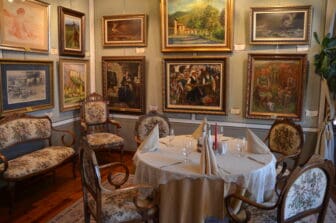
When we finished eating and climbed the stairs, we met the owner here, and she said, “Come and see,” so we paid for it.
The guidebook describes it as “Bulgaria’s first private art gallery”.
The house, built in 1865, was restored into a gallery, which was filled with paintings by Bulgarian painters from the 19th and 20th centuries.
There were also tables, so on special occasions, it seems that you can eat while looking at the pictures.
In the room on the ground floor, works by contemporary painters were exhibited and sold.
There was a building with a sign saying “Academy of Art” in this neighbourhood, so they may be students’ works.

